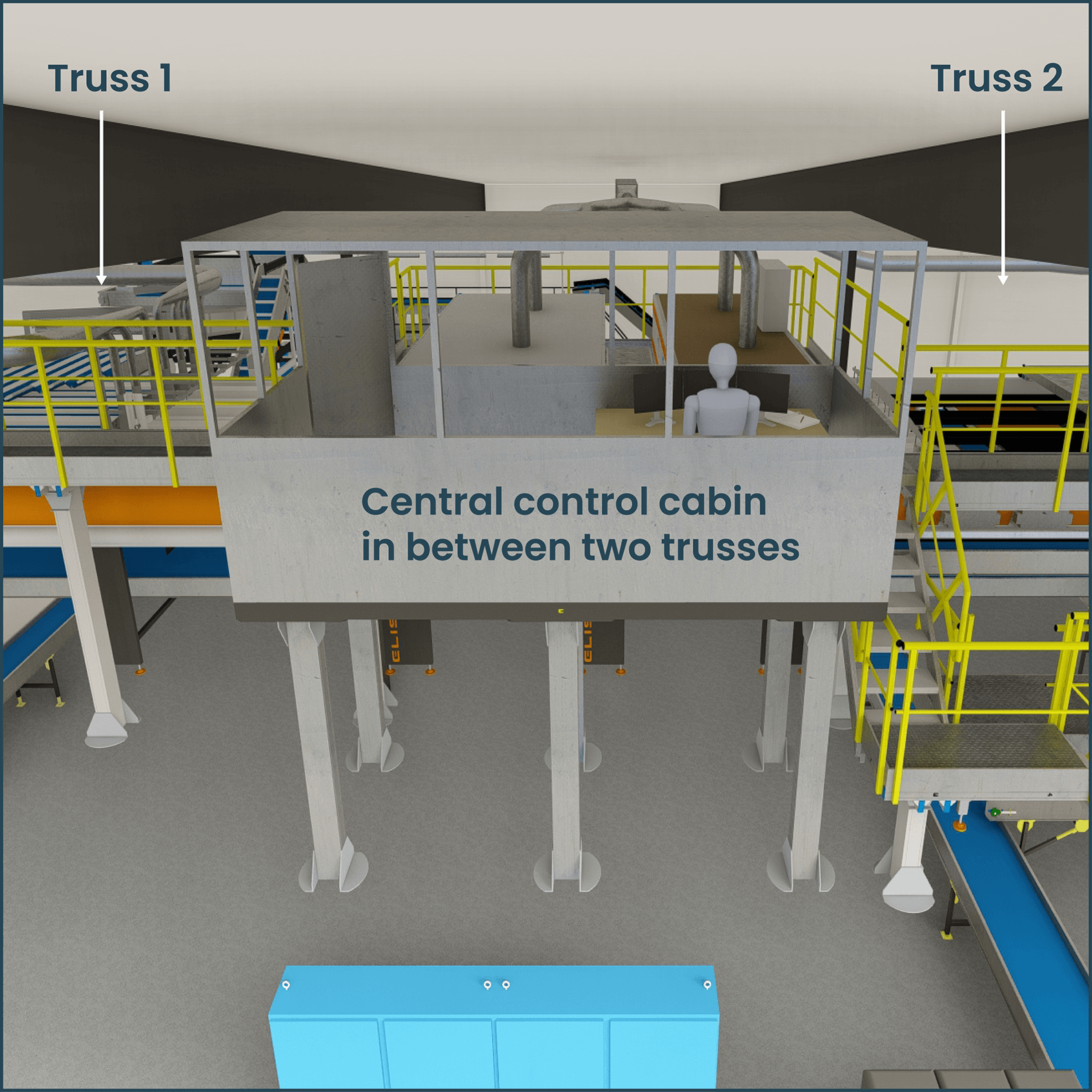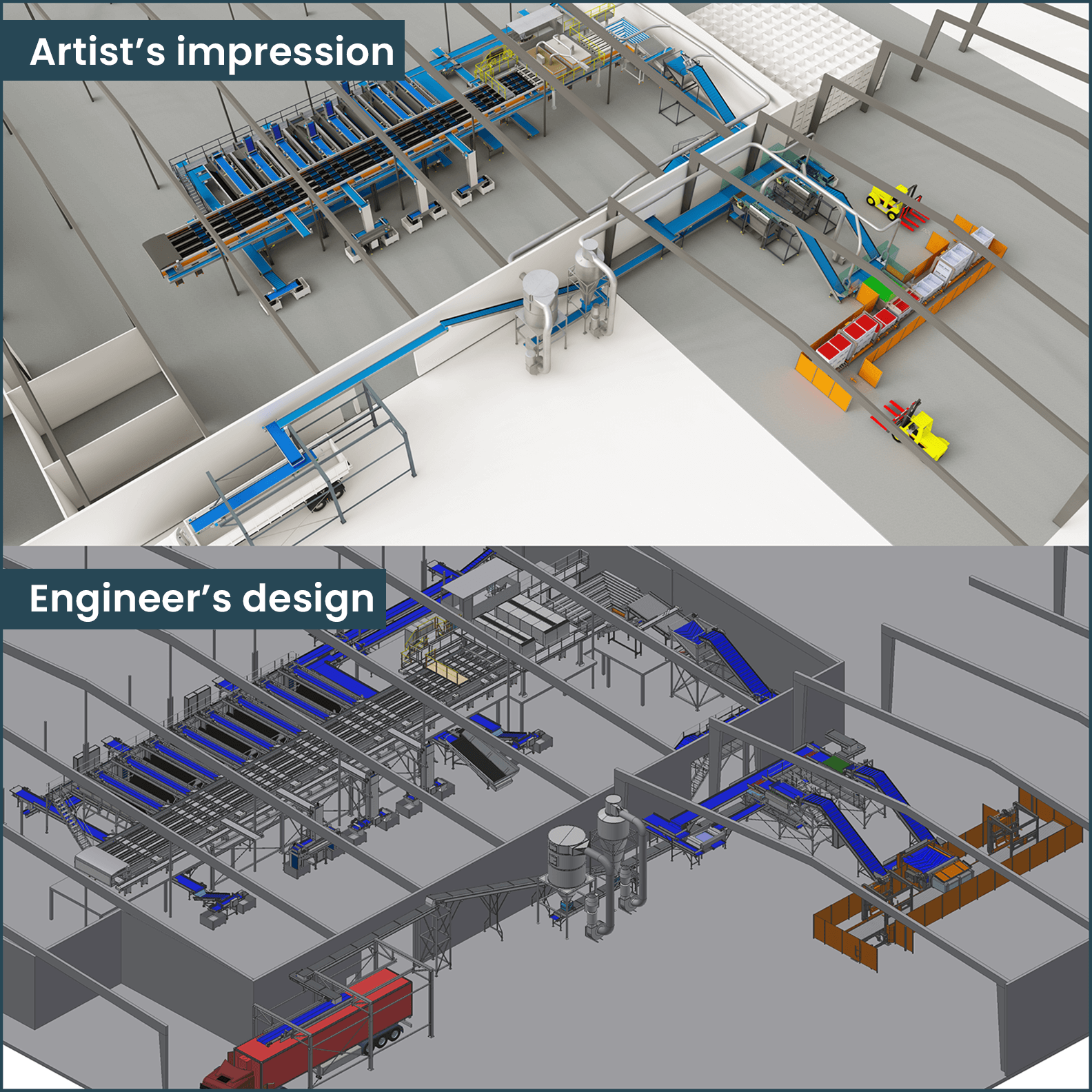Project Planning
In the Partnership of Companies we work together with various suppliers and a dealer. The suppliers Project come from different countries. Every company has its own culture and way of delivering and executing and installing a project. The Partnership of Companies has supplied installations to more than eighty countries around the world over the past twenty-five years. Our customers range from multinationals to individual growers. Many countries have their own specific laws and regulations. For electricity supply, countries also differ, even in a country the amperage and voltage can still differ per state. The different parts of a line must all be connected smoothly to each other. In a Green Field project, the project managers of the dealer and those of the suppliers must consult with the civil contractor. The new building is often built around the line. Heights of the trusses, location of pillars and the strength of any mezzanine are just a few aspects that need to be discussed properly. In the explanation below, project and delivery schedule, way of packaging, project manual and consultation method of consultation are explained in more detail.

Delivery scheme
A complete project or a line and even individual machines are composed of a complex set of parts. All companies of the Partnership of Companies keep a large stock of parts. With the current uncertain supply chain, the purchasing department is very alert to those parts where problems in the delivery can occur. We work with regular suppliers with whom we have good experiences. When making a delivery scheme, we have good consultation with all the companies involved. The delivery times of all suppliers are entered in a dynamic life schedule. We try to determine the number of containers for each supplier as accurately as possible. For this we make loading drawings per container. When drawing up a delivery schedule, you have to deal with various variables that you have no influence on. In 2022, for example, there was a major problem with the availability of containers. Prices in 2022 were also extremely high. Fortunately, these are back to a normal level. We pay a lot of attention to the loading of the containers. When possible, we take pictures of how it is loaded. Clear collie lists and good markings on the parts in the containers are very important things. We prepare it in such a way that we do not have to search for the location of the machines and parts in the container where it has to come in the project.
Line Management and Assessments
When we have put together the final version of the installation and/or project, we will work with you and the participants in The Partnership of Companies to create a plan for the day to day management of the project. We bring all the aspects that we have already discussed here together in a so-called line manual. In this line manual we make clear what you can expect when you start using the new installation. All parts of the different participants are analyzed in detail. We make everything per component very transparent. We quantify the entire project. With each transition of the product (potatoes, onions, etc.) in the line, we show what happens qualitatively and quantitatively. With all these data we can make a proposal for the central control system. When the central control system has also been worked out, we can simulate production days. we enter the data from the input at the beginning of the line until the paletizing in the model. We go through the whole process. What are the effects in the different stages in the line. what has a certain suggested grading schedule for effect after a day of running. Where do the bottle necks come out. When did we reach the critical grading with accompanying packaging? What problems can we expect and tackle in advance.


Consultation with Civil Contractor
When putting together a line or developing a greenfield project, one or more civil contractors are always involved. It is often that we jointly project a building around the installation. In the case of a washing installation, we have to draw up a plan for water management together. The entire supply, drainage and recirculation must be fully mapped before the new or renovation starts. Another essential point is the supply of electricity. We always make a complete overview of the Full Load of Amperage (FLA) of the entire installation. Where should the connections with which amperage for the different parts of the line or installation be located? Where do the different electrical panels will be situated? Can the various components such as dust extraction, weighing and packaging and palletizing be integrated into a central panel? All these questions are addressed at an early stage in our joint meetings. In the drawing, we can jointly draw up a plan with the electricity contractor for the cabling with the necessary cable ducts. When the project is in an existing building, there must be a very detailed plan/ drawing of this building. We have already placed many installations in seemingly far too small spaces, where we came up with creative solutions. We will be pleased to show you these in a video conference.
From final plan to elaborated project
When we have reached agreement on the specifications of the line, the project is taken into production. All models of the machines in the drawings in the sales phase are models where only the outside can be seen. The drawings at this stage of the plan are relatively easy to change. Changes have no consequences yet. However, when we have become a plan final and have taken it into production, every change has consequences. Everything still fits together. Do all belt lengths still apply? In case of changes to the final order, we speak of change orders. We will do everything in our power to execute this change order. Sometimes, however, the changes can have major consequences for the delivery time. In modern production processes, changes in an implemented project are not so easy. The projects are put in a drawing in its entirety. At the beginning of the project all parts to be produced and to be purchased are entered into the ERP (Enterprice Recoursce Program). The individual departments in the companies involved in the project will immediately draw up their plans. Of course, changes are possible. Especially when these are really very clear improvements compared to the original plan. However, these changes must be possible and realistic.










